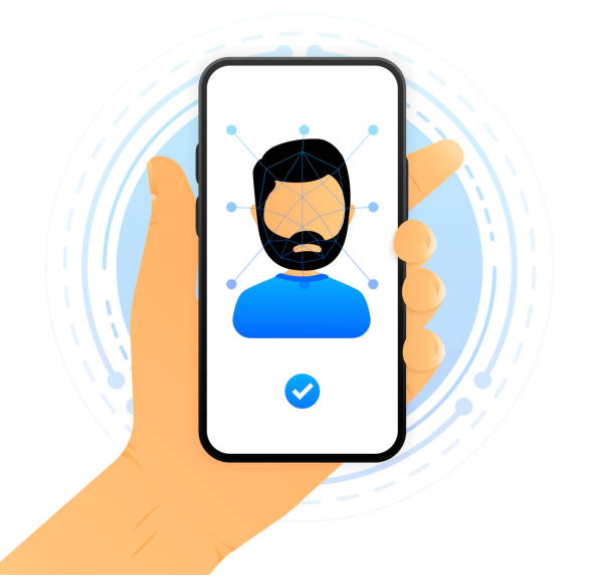Video Verification – The Ultimate Tool for Banks to Onboard Customers
Companies are now more digitized than ever. Banks and other financial institutes depend on the internet, from onboarding customers to performing various functions. Organizations utilize remote video verification for compliance, client authentication, and digital onboarding to enhance due diligence.
As technology advances, so do clever scammers, as they dig for the latest techniques to break security. Video verification is the process of identifying customers’ identities. Technology updates companies and allows them to comply remotely with know-your-customer (KYC) regulations. The online video KYC market is growing rapidly and is estimated to collect revenue of $500 million by 2026, facilitating the companies to enhance their verification process and work with full potential.
What is Know-Your-Customer (KYC) Verification?
KYC is a process to identify the customer’s identity by attesting to the provided verification documents. It serves as the umbrella for all other obligations, and following it assists companies in complying with other regulations. Customers must submit verification documents in KYC, as companies can detect their identity through these papers. Attesting these papers enhances the KYC process and eliminates the chance for a company to fall into scams.
Video Verification: Strengthening the Onboarding Process
Instead of visiting the office for KYC verification, remote video verification enables customers to comply with regulations whenever and wherever. Video KYC solution allows secure client onboarding. In traditional KYC verification, customers have to visit the office for face-to-face verification and submit documents. However, remote KYC makes it easy for the customer, and AI technology is secure for the banks. Customers can schedule a video call with the bank agent to process all onboarding steps. Online video KYC is an efficient and smooth process. It also authenticates the documents meticulously to enhance due diligence (EDD) in banking. Below are the benefits of video verification services to strengthen the onboarding process.
Convenient For Customer
Clients have to comply with the KYC regulations, these policies are either laid down by the company or government bodies. Traditional compliance method is complicated and time-consuming for customers. They have to visit the banks and submit their documents. After verifying them, bank agents call the customer for an interview for face-to-face verification. According to KYC regulations, video verification allows companies to onboard customers with enhanced due diligence. It helps to verify customers and adhere to government regulations. Video KYC banks offer customers to undergo the verification process from home remotely. They don’t need to visit the office for an interview or submit documents because all procedures can be done with one call. It ensures a smooth customer onboarding process with less time and effort.
Real-Time Interaction
Live video calls enhance the customer onboarding experience by engaging directly with the bank agent. They can get the guideline from the bank representatives and go through their queries. In video verification, customers can also seek clarification and receive immediate assistance during the verification process. The representative can guide the customer through the required steps, address any concerns or doubts, and provide personalized service tailored to the customer’s specific needs. This in-person encounter improves the customer onboarding experience by encouraging engagement, trust, and customer-centric service. It allows for a more engaging and collaborative verification process, making clients feel supported and valued throughout their onboarding experience.
Reduce Drop-offs
Banks always need some proactive onboarding technique which reduce customers’ bounce rate. The key is creating an omnichannel for customers to engage them in onboarding, whether sending an email, a message or conducting a call for video verification. Banks can utilize advanced technology for frequent and authentic verification. During the video call, a bank agent can give customers real-time authentic results. It also enhances the paper authentication process by eliminating the need for manual document submission. This simplifies the onboarding process and reduces the chances of errors or missing documents.
Digitization and automation of document verification, along with the latest technology, help to accelerate the entire KYC process. Video KYC solutions add a layer of protection with AI-framework for document checks, face recognition, and compliance with regulations. Identity validation with the help of video verification saves the customer’s time and spares resources for other productive work. Completing the KYC process with vigorous technology reduces the rate of customer drop-off and leads the company toward growth.
Sustain Regulations
Video verification incorporates advanced security measures for the banks to comply with all regulations, such as facial recognition and document authentication technology. These measures help ensure that the customer’s identity is accurately verified, and they help protect against fraudulent activities. The enhanced security instils confidence in both the customer and the institution.
Banks and other financial institutes must comply with AML, CTF, and KYB regulations. Video verification assists banks in sustaining these regulations. Compliance with laws protects companies from financial fraud and fines.
Final Words on Video Verification
Video verification is the perfect tool to unlock the door of promptly verifying customer identity. It onboards customers with convenient procedures by whisking away the hassles of visiting the office and submitting the stack of paperwork. The video KYC process also enhances security and shields against fraud and fines. Overall, video verification is a seamless onboarding experience and creates a long-lasting trustful environment between customers and companies.
